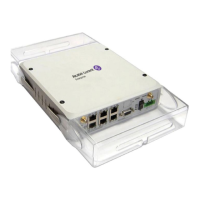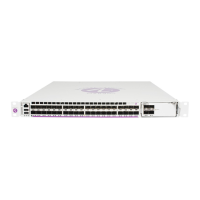Configuration Overview
Page 30 7705 SAR OS Interface Configuration Guide
Multilink bundles and IMA groups are identified using the format bundle-type-
slot/mda.bundle-num; for example, bundle-ima-1/5.2.
Access and Network Ports
All ports on adapter cards must be set to either access (customer-facing) or network mode:
• access ports — configured for customer-facing traffic on which services are
configured. If a Service Access Point (SAP) is to be configured on the port or
channel, the port or channel must be configured as an access port or channel. When
a port is configured for access mode, the appropriate encapsulation type must be
configured to distinguish the services on the port or channel. Once a port has been
configured for access mode, one or more services can be configured on the port or
channel depending on the encapsulation value.
• network ports — configured for network-facing traffic. Network ports are used as
uplinks for Ethernet, ATM, and TDM pseudowires. For Ethernet cards, the
encapsulation type can be set as null or dot1q.
All channel groups on a port must either be all access or all network channel groups; there
cannot be a mix. When the first channel group is configured, all other channel groups on that
port must be set to the same mode. To change modes, all channel groups must first be shut
down.
The default mode for the T1/E1 ASAP Adapter card is access, and the default mode for the
Ethernet Adapter card is network. In Release 2.0, the OC3/STM1 Adapter card supports
access mode only.
Access Ports
Access ports on the Ethernet Adapter card can transport traffic from sources such as e911
locators, site surveillance equipment, VoIP phones, and video cameras. The Ethernet traffic
is transported over the PSN using Ethernet VLLs.
Access ports on the T1/E1 ASAP card can be configured for PPP/MLPPP channel groups.
Customer IP traffic can be transported directly over PPP or MLPPP links. The access ports
can also be configured for TDM to transport 2G traffic from BTSs or ATM/IMA to transport
3G UMTS traffic from Node Bs. All member links of the IMA group must reside on the
same card. The 2G traffic is transported across the PSN encapsulated in a TDM VLL. The
3G traffic is transported using ATM VLLs.

